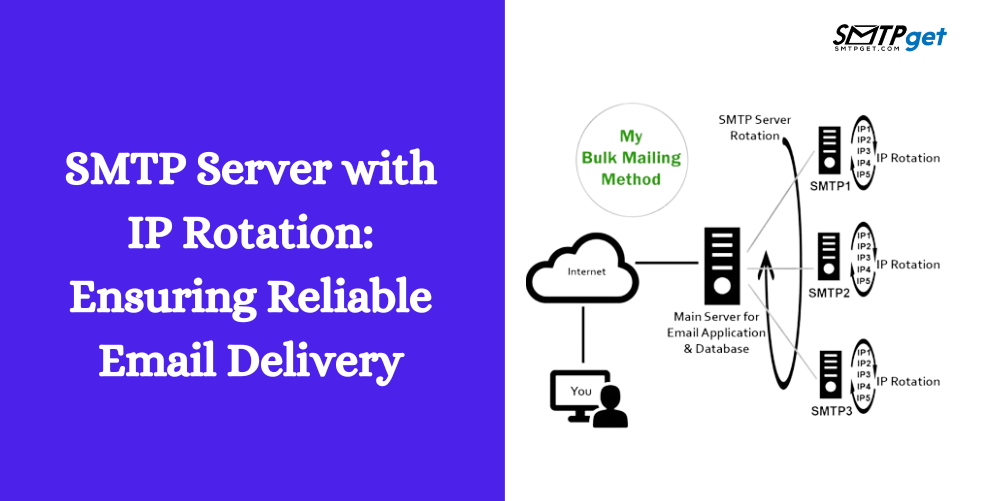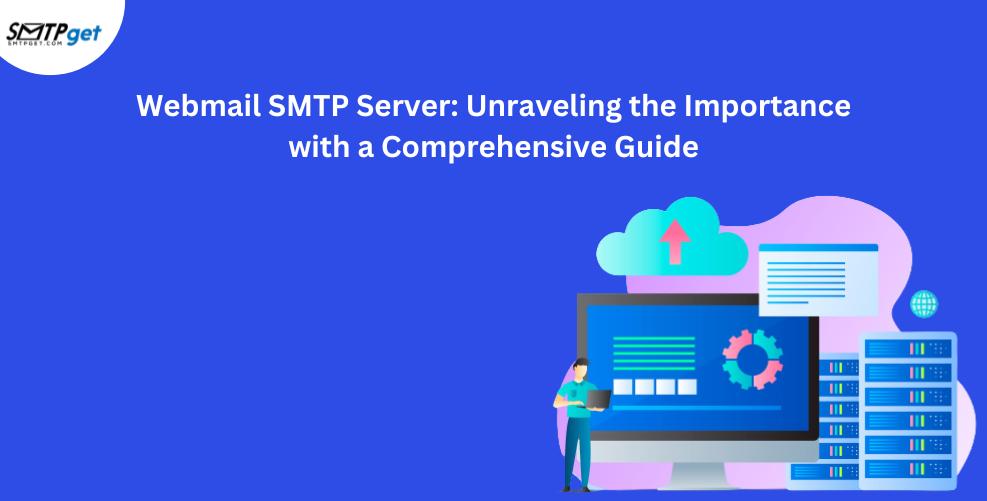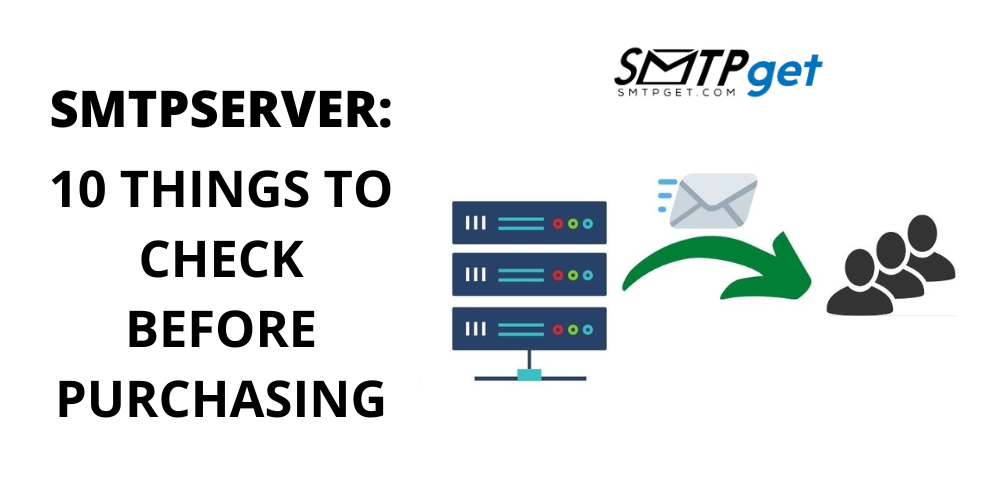What is an SMTP server with IP Rotation and How does it work?
Posted byAkashon12 07 2023. 0 Comments

SMTP server services ensure that messages are properly formatted and routed to the intended recipients. However, ensuring reliable email delivery can be a challenge due to various factors such as spam filters, blacklisting, and strict email provider policies. One effective solution to overcome these problems by utilizing an SMTP server with IP rotation. In this article, we will explore the concept of an SMTP server with IP rotation, what is SMTP server with IP rotation is, its benefits, and how it works to increase email deliverability with the help of a PowerMTA™ SMTP mail server.

Check Out Our Pricing
|
Pricing |
Cheapest Plan |
Standard Plan | Professional Plan |
|
$110 |
$165 |
$220 |
|
|
$50 |
$145 |
$225 |
|
| Bulk Email Service | $30 | $110 |
$220 |
The Importance of Email Deliverability
Email deliverability refers to the ability to successfully deliver emails to the recipients’ inboxes without being flagged as spam or bouncing back. It is crucial for businesses and individuals relying on email communication to ensure that their messages reach the intended recipients.
What is an SMTP Server with IP rotation?
SMTP servers with IP rotation are specialized email servers that use a pool of multiple IP addresses to send outgoing emails. Instead of relying on a single IP address, these servers rotate through a range of IPs, providing a higher level of reliability and reducing the chances of being flagged as spam.
How SMTP Server Services with IP Rotation Work?
SMTP Server Services with IP rotation work by regularly switching the sending IP address for each email sent. This rotation by your SMTP server provider helps overcome the limitations imposed by email providers, which may impose sending limits or monitor IP reputation. By rotating IPs, the server can distribute the sending load and maintain a positive reputation for all IP addresses in the pool.
Benefits of SMTP Servers with IP Rotation
Enhanced Deliverability: With IP rotation, the chances of emails reaching the recipient’s inboxes significantly increase. By avoiding blacklisted or flagged IP addresses, SMTP IP rotation maintains a positive reputation, leading to improved deliverability rates.
Improved IP Reputation: With the help of a Non-Suspended SMTP server IP address rotation ensures that the reputation of the sending IPs remains favorable. This reduces the risk of being blocked or marked as spam, allowing businesses to maintain reliable email communication with their customers.
Higher Sending Capacity: SMTP Service Services With IP Rotation offers increased sending capacity by utilizing multiple IP addresses. This allows businesses to send a higher volume of emails without triggering sending limits imposed by email providers.
Better Email Analytics: By using PowerMTA server IP rotation, businesses gain access to complete email analytics. These analytics provide insights into SMTP servers for email marketing email delivery rates, open rates, click-through rates, and bounce rates, enabling companies to optimize their email marketing strategies.
Increase Email Deliverability with SMTP Server IP Rotation
To maximize the benefits of PowerMTA server IP rotation and enhance email deliverability, consider the following best practices:
Maintain a Clean Email List: Regularly clean your email list by removing inactive or unsubscribed contacts. This ensures that your emails are targeted and relevant, reducing the chances of being marked as spam.
Authenticate Your Domain: Implement email authentication protocols such as SPF, DKIM, and DMARC to verify the authenticity of your emails. This helps establish trust with email providers and improves deliverability.
Monitor IP Reputation: Keep an eye on your sending IPs’ reputation by regularly checking for blacklisting or spam reports. If any issues arise, take immediate action to rectify the situation and maintain a positive reputation.
Personalize and Segment Emails: Tailor your emails to specific target audiences by personalizing content and segmenting your email list. This increases engagement and reduces the likelihood of being marked as spam.
Factors to Consider when Choosing an SMTP Provider
When selecting a cost-effective SMTP provider for your IP rotation needs, consider the following factors:
IP Rotation Capabilities: Ensure that the provider offers IP rotation functionality, allowing you to distribute sending across multiple IPs effectively.
Deliverability and Reputation: Research the provider’s reputation and deliverability rates to ensure high-quality service and reliable email delivery.
Scalability: Choose a provider that can accommodate your growing email needs and offers flexible plans to scale accordingly.
Analytics and Reporting: Look for providers that offer detailed analytics and reporting features to monitor the success of your email campaigns.
Read More: Hosted Email Services: Unlocking Efficiency and Security & Exploring the Benefits.
Setting Up an SMTP Server with IP Rotation
To set up an SMTP server with IP rotation, follow these steps:
Select an SMTP Provider: Choose a reputable SMTP mail server that offers IP rotation capabilities and meets your specific requirements.
Configure Sending IPs: Set up a pool of multiple sending IPs provided by your SMTP server for email marketing.
Authenticate Your Domain: Implement SPF, DKIM, and DMARC records to authenticate your domain and improve deliverability.
Integrate with Email Software: Integrate the SMTP server with your preferred email software or marketing automation platform.
Configure IP Rotation Settings: Set the desired IP rotation frequency and rules according to your needs and provider’s guidelines.
Best Practices for Using PowerMTA IP Rotation
To maximize the effectiveness of PowerMTA IP rotation, consider the following best practices:
Maintain IP Warm-up: Gradually increase the sending volume and frequency to warm up new IP addresses and establish a positive sending reputation.
Regularly Monitor Deliverability: Monitor email deliverability metrics and identify any issues or areas for improvement. Make necessary adjustments to enhance deliverability rates.
Keep Your IP Pool Updated: Regularly review and update your IP pool by replacing underperforming IPs or adding new ones. This ensures optimal deliverability and reputation management.
Stay Compliant with Email Regulations: Familiarize yourself with email regulations and anti-spam laws to ensure compliance and maintain a positive sender reputation.
Read More: Outbound SMTP Relay Service Provider: Streamline Your Email Communication
Common Challenges and Troubleshooting Tips
Blacklisting: If one of your sending IPs gets blacklisted, promptly contact your SMTP provider for assistance in resolving the issue and removing the IP from the blacklist.
Bounces and Complaints: Monitor bounce rates and feedback loop data to identify potential issues with your email list. Remove bounced and complained email addresses to maintain a healthy sender reputation.
Spam Folder Placement: If your emails consistently land in recipients’ spam folders, review your email content and sender reputation. Adjust your email content and follow best practices to improve deliverability.
IP Rotation Configuration: If you encounter difficulties configuring IP rotation settings, reach out to your SMTP provider’s support team for guidance and troubleshooting.
Future Trends in SMTP Servers and IP Rotation
The field of PowerMTA SMTP IP rotation is continuously evolving to meet the changing demands of email deliverability. Here are some future trends to watch out for:
Advanced IP Rotation Algorithms: SMTP providers will develop more sophisticated algorithms for IP rotation, ensuring optimized delivery rates and improved sender reputation management.
Artificial Intelligence and Machine Learning: AI and ML technologies will be integrated into SMTP servers to analyze email engagement patterns, predict deliverability issues, and recommend optimization strategies.
Enhanced Analytics and Reporting: SMTP providers will offer more detailed and real-time analytics, allowing businesses to gain deeper insights into email performance and make data-driven decisions.
Greater Integration with Marketing Platforms: SMTP servers will seamlessly integrate with popular marketing automation platforms, enabling enhanced email campaign management and targeting capabilities.
Automation and Personalization: The bulletproof SMTP server will incorporate advanced automation features, enabling personalized email experiences at scale, and resulting in higher engagement and deliverability rates.
In conclusion, utilizing an SMTP server with IP rotation is a powerful strategy to ensure reliable email delivery and overcome challenges associated with spam filters and blacklisting. By rotating IP addresses, businesses can enhance deliverability, maintain a positive sender reputation, and maximize the effectiveness of their email marketing efforts. As the field continues to evolve, leveraging the benefits of SMTP servers with IP rotation will become increasingly vital for successful email communication.















